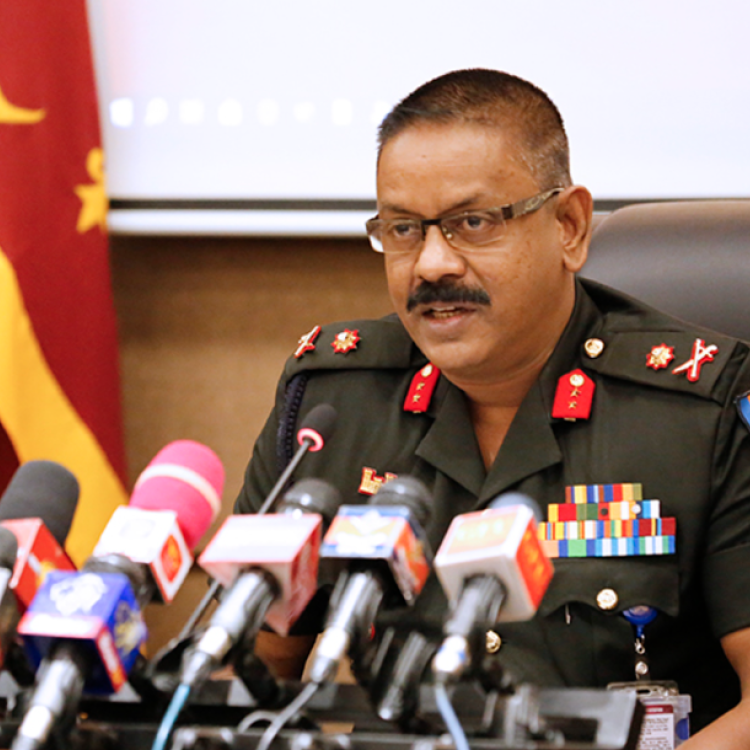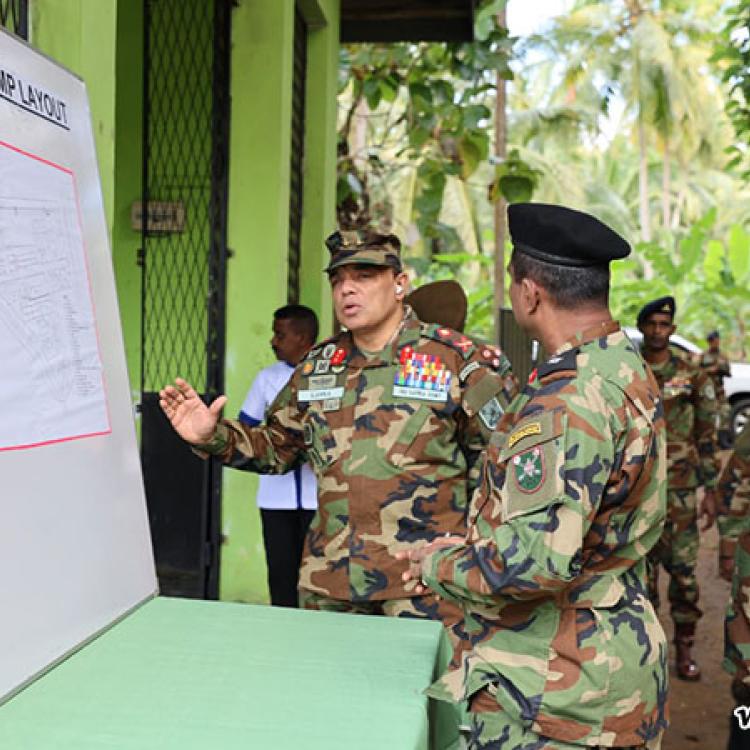.jpg)
The Sri Lankan Army headquarters has announced that a military camp in Karkovalam in Jaffna is to be removed, after almost three decades of occupation.
The land, comprising three acres, will reportedly be returned to its rightful owners, three Tamils from the area, within 14 days. It is the first move to dismantle the intense militarisation of the Tamil homeland in years.
Efforts to dismantle the camp reportedly began on November 18, following a long history of disputes over the land’s ownership. Located near the beach and falling under the jurisdiction of the Vadamarachchi North Divisional Secretariat, the camp in question has been operational since 1995, when the Sri Lankan military occupied the Jaffna peninsula.
.jpg)
Last year, the camp was one of several reportedly slated to be disbanded as part of efforts by the then-Ranil Wickremesinghe government to release lands to Tamils. However, such an initiative never got off the ground, and the base continues to be in active use.
It currently houses the 16th battalion of the Sri Lanka Light Infantry (SLLI). See the camp on Google Maps below.
There have been efforts to expand the camp at least twice in the past. On both occasions, political leaders and the original landowners resisted survey work intended to formalize the acquisition, delaying its complete annexation. In 2021 the owners of the land objected to the army attempting to survey more land for expansion. At the time protesters blocked land surveyors and officials who had come to survey the land and stated the land would not be handed over to the army.
.jpg)
Tamils protest against the camp expansion in 2021.
Though the army continue to occupy the camp, Sri Lanka Podujana Peramuna (SLPP) parliamentarian Namal Rajapaksa has already tweeted his concern, stating that Sri Lanka “fought 30 yrs of terrorism”. The release of land “should not be done at the cost of compromising national security,” he added.
According to reports, an army camp in the North has been withdrawn, for land to be released back to civilians and many more such camps are to be withdrawn in coming months. While the release of lands is not an issue if it is done in consultation with the security forces, it…
— Namal Rajapaksa (@RajapaksaNamal) November 20, 2024
Across the North-East, hundreds of military camps and bases remain scattered, many of them built on lands forcibly taken from Tamil civilians. Despite years of advocacy by displaced landowners and civil society groups, progress in land issues has been piecemeal.
.jpg)
The scale of militarization in the North-East of Sri Lanka remains staggering. Over 15 years since the end of the armed conflict, the region continues to host an outsized military presence, with armed forces occupying key areas, including fertile agricultural lands, schools, and homes. For decades, this has disrupted the livelihoods of displaced communities while enabling state control over strategically important or resource-rich territories.
Sri Lanka remains one of the most militarized places in the world with the government continuing to allocate significant resources to the defence sector, even amid an ongoing economic crisis.
“For every 100 citizens, we have 1.5 soldiers,” Eran Wickramaratne of the Samagi Jana Balavegaya (SJB) admitted to Sri Lanka’s parliament earlier this year. “We rank among the top ten countries with the highest number of soldiers per 100 civilians. In 2022, we spent 4 percent of our GDP on education, 5 percent on health, and 7 percent on defense, with around 60 percent of the defense budget going towards wages.”
A 2017 report by the Adayaalam Centre for Policy Research (ACPR) and People for Equality and Relief in Lanka (PEARL) found at least one Sri Lankan soldier for every two civilians in Mullaitivu. The Sri Lankan military has faced credible accusations of committing war crimes during the culmination of the genocide in 2009, where tens of thousands of Tamils were killed.
The scale of the Sri Lankan military is staggering; in 2018, the World Bank estimated there were 317,000 service personnel in the country—twice the size of the UK's regular forces. Despite such criticisms, the military has intensified its presence in the North-East since 2009, deeply embedding itself in various aspects of civil society. Military-run schools, businesses, resorts, and factories are prevalent in the North-East, contributing to a culture of fear and surveillance among the Tamil population.


